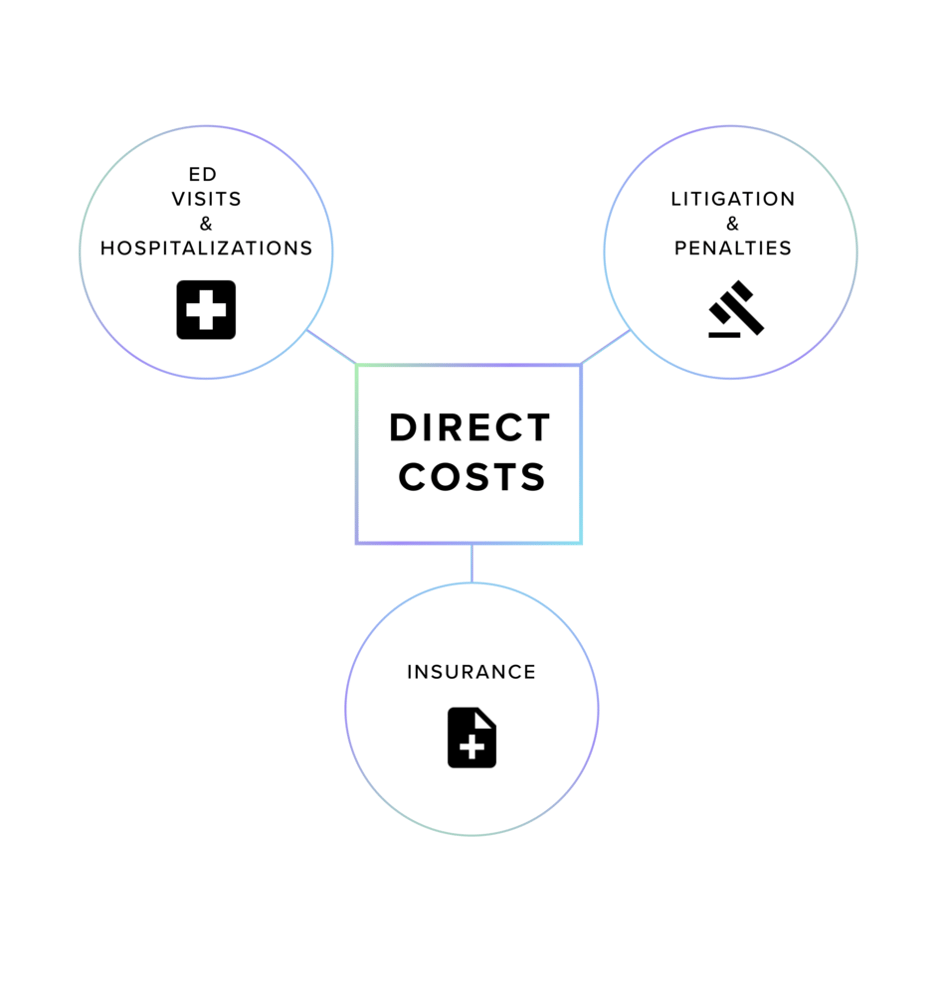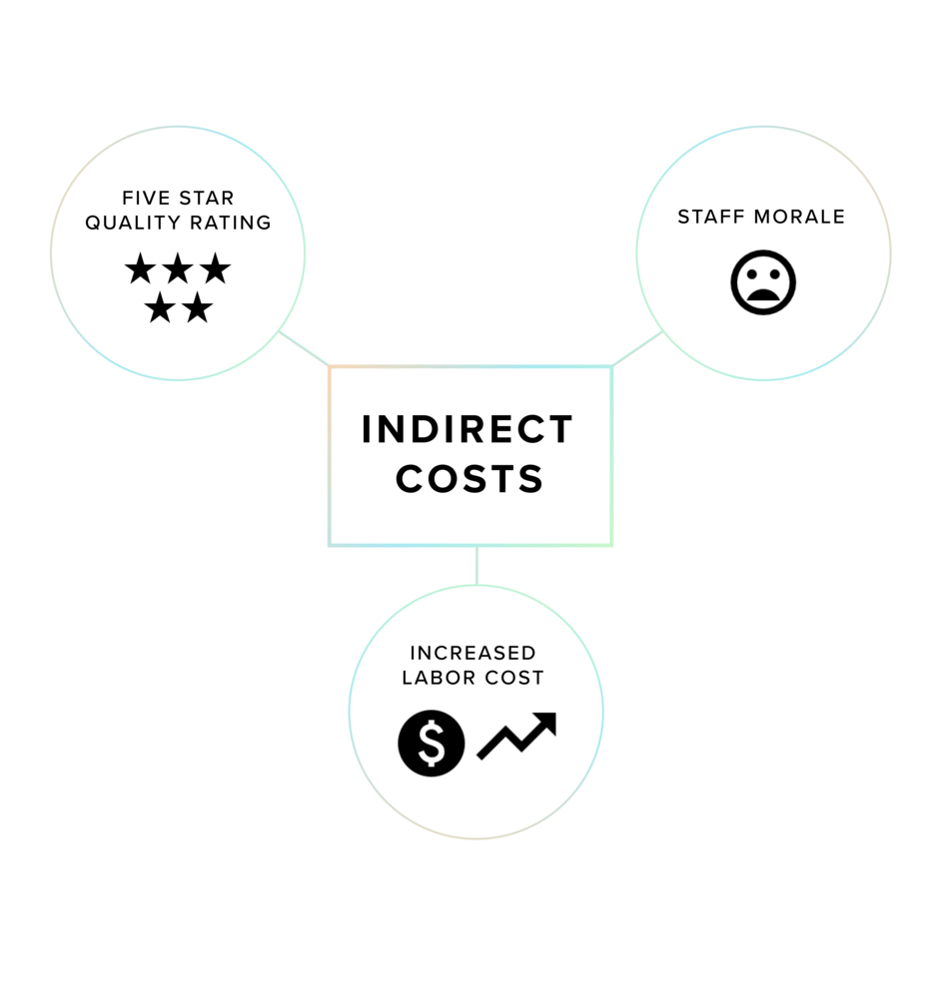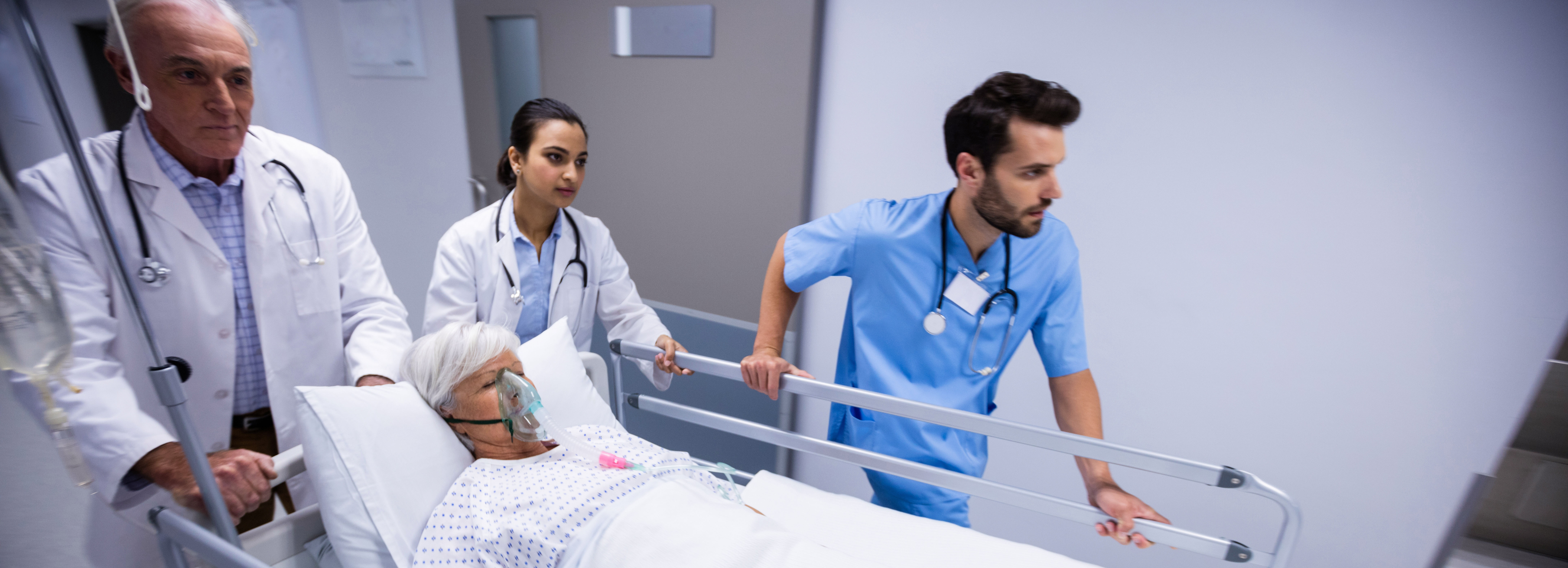In 2018, the CDC estimated that there were over 2.4 million emergency department visits and more than 700,000 hospitalizations occurring among older adults from fall-related injuries and other emergencies. The cost of falls with injury come in many different forms and can impact the financial well-being of your community. There are direct costs, which include emergency department visits, hospitalization, lawsuits and insurance fees, while indirect costs can have longer-lasting effects.
Direct Costs
- ED Visits & Hospitalizations: Residents are hospitalized most often for a head injury or hip fracture, at an average cost of over $30,000.
- Litigation and Penalties: Failing to effectively prevent falls without a proper program puts your community at risk for lawsuits that cost upwards of hundreds of thousands of dollars. The average cost of an insurance claim in skilled nursing facilities is $186,000.
- Insurance: There are fewer insurance providers in the LTC market than ever. According to Kris Hansen, CEO of Western Home Communities, “The insurance market is getting so limited that you better be able to show that you’re being proactive to mitigate fall risk or you won’t get insurance.”

Indirect Costs
While direct costs are often seen as immediate post-fall effects, indirect costs are often more persistent in the long run as they can impact staffing, your Five Star Quality Rating, and labor costs.
- Five Star Quality Rating: A low Five Star Rating directly impacts census and negatively impacts your reputation.
- Staff Morale: When a resident falls, it’s demoralizing to the staff and causes substantial burnout.
- Increased Labor Cost: Every fall requires significant documentation which takes time away from directly helping patients, and in turn increases labor expenses.

AI Can Help You Get a Perfect Rating & Save You Money
At VirtuSense, we believe the best approach to stopping a fall is to prevent it altogether. VSTAlert is able to identify and alert staff of bed and chair exits from 30 to 65 seconds before a resident even gets up. It causes 95% fewer false alarms, reduced falls, and allows nurses to care for patients that need help most.
Proven Results
One community saw an 82% reduction in falls within the first three months of VSTAlert deployment. Another community saw a 71% reduction in falls with injury. In both cases, our AI technology exceeded expectations.
For more information on the cost of falls and VSTAlert, please click here.


